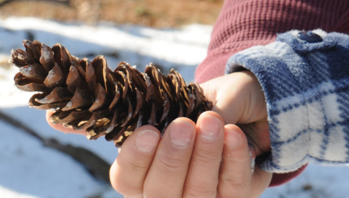- fabric scraps (various textures)
- objects (various textures)
- sheets of waxed, foil, or shiny paper
How Does It Feel?

© Commonwealth of Massachusetts, Department of Early Education and Care (Jennifer Waddell photographer). All rights reserved.
Soft materials like fleece and flannel can be comforting for babies—but babies are curious about other textures, too. Give them lots of chances to explore natural and man-made things that are rough, bumpy, spongy, slippery, and even a little scratchy.
Here are some fun ways to let babies investigate how things feel.
- Offer babies fabric scraps to play with such as wool, corduroy, silk, velvet, and fake fur. Name the fabrics. Talk about what they feel like and what the babies do with them.
- Let babies roll, crawl, toddle, and push toys across different surfaces such as grass, sand, rubber mats, carpet, and hard flooring. Help babies notice how they can slide or scoot on slippery surfaces; bounce on springy ones; and crawl, walk, or run on firmer ground.
- Offer babies natural materials to touch, such as pinecones, flower petals, bark, and moss. Name and describe each object. Talk about how babies pat, shake, roll, and squeeze the materials. Ask family members to supply key words in their home languages and include them in your descriptions.
- For a different experience, tape a large piece of foil, waxed paper, or shiny wrapping paper to the floor. Place babies on the surface and let them crawl, walk, or wiggle around. Notice how they react. Talk about what they see, feel, and do.
- Introduce books with different textures, such as Pat the Bunny by Dorothy Kunhardt and DK Publishing’s Baby Touch and Feel books. Encourage a baby to feel the textures as you read together.
